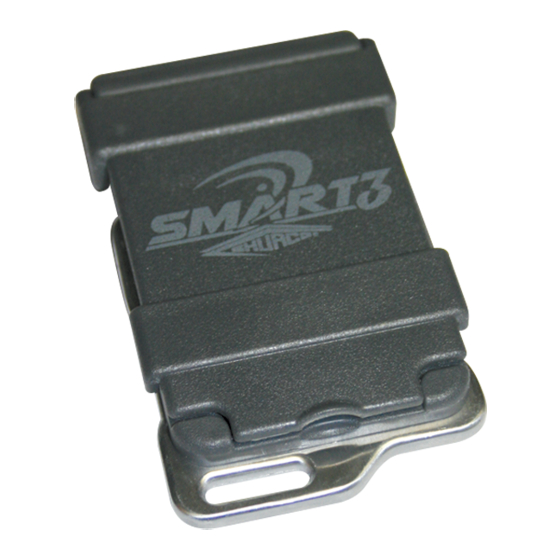
Table of Contents
Advertisement
Quick Links
Advertisement
Table of Contents

Summary of Contents for Shur-Co SMART3
- Page 1 P/N 1126870 Rev. B Wireless Remote...
- Page 2 Item Part # Description 1. 1126867 SMART3™ Replacement Transmitter 2. 1705940 SMART3™ Operation Labels NOTICE Do not power SMART3™ or any Shur-Co wire- ® less system with battery charger alone, as this will likely cause system abnormalities and/or system malfunction. Instead, use 12-volt truck/automobile...
- Page 3 NOTE: Even if remote channel is configured to EXPRESS MODE, system will not operate in EXPRESS MODE unless encoder wires between motor and control box are connected. NOTE: Some Shur-Co products are not compatible with ® EXPRESS MODE. If motor does not have encoder wire or other feedback, system will operate in MOMENTARY MODE only.
- Page 4 Release button. Receiver NOTE: Remotes are typically paired to receivers at factory if is now in Pair Mode. remote is shipped with receiver. NOTE: Only SMART3™ remotes will function with SMART3™ receivers. The original SMARTtransmitter ® SMART1+™ cannot be used.
- Page 5 This indicates first channel is ready to REPLACING BATTERIES be configured. The SMART3™ remote uses two AAA batteries. To access 2. Set operating mode of channel. If Express Mode indicator batteries, unfasten center screw shown below and gently lift light is lit solid, then channel will operate in Express Mode.
- Page 6 (marked In and Out) when motor wire is disconnected, motor may be damaged or there may be a short circuit in motor wire between motor and solenoid. This assumes system has been checked for corrosion and other issues listed above. Call Shur-Co’s Help Line.
- Page 7 There is one weatherpack connector near the motor and one in the kingpin area. 2. Call Shur-Co’s Help Line. NOTE: To quickly determine if problem lies with wiring between battery and solenoid, disconnect power from truck and hook jumper cables from vehicle directly to solenoid.

Need help?
Do you have a question about the SMART3 and is the answer not in the manual?
Questions and answers